What Are Drug-Drug Interactions?
When you take two or more medications at the same time, they don’t always just work side by side. Sometimes, one drug changes how another behaves in your body-this is called a drug-drug interaction. It can make a drug stronger, weaker, or cause unexpected side effects. These aren’t rare mistakes; they’re common, predictable, and often dangerous. In fact, about 3-5% of hospital admissions in people over 65 are linked to harmful drug interactions. And it’s not just older adults. Anyone on multiple prescriptions, including over-the-counter pills or herbal supplements, is at risk.
Two Main Ways Drugs Interact
Drug interactions fall into two big categories: pharmacokinetic and pharmacodynamic. Think of pharmacokinetic as what the body does to the drug, and pharmacodynamic as what the drug does to the body.
Pharmacokinetic interactions change how much of a drug gets into your bloodstream and how long it stays there. This happens through four main steps: absorption, distribution, metabolism, and excretion. For example, if a drug slows down how fast your stomach empties, it can delay how quickly another drug is absorbed. Or if two drugs compete for the same protein in your blood, one might push the other off, making more of it free and active in your system.
But the biggest player here is metabolism-especially through the liver’s CYP450 enzyme system. CYP3A4 alone handles about half of all prescription drugs. If you take a drug that blocks CYP3A4, like ketoconazole or grapefruit juice, other drugs that rely on it to break down-like simvastatin-can build up to toxic levels. That’s why someone on simvastatin could end up with severe muscle damage (rhabdomyolysis) just by adding a common antifungal.
Pharmacodynamic interactions are different. They don’t change drug levels-they change how the drug works at its target. Two drugs might both lower blood pressure, and together they drop it too far. Or one drug might block the effect of another. A classic example is combining fluoroquinolone antibiotics with macrolides like erythromycin. Neither alone is likely to cause serious heart rhythm problems, but together, they can increase the risk of torsades de pointes by over five times.
Who’s the Perpetrator? Who’s the Victim?
In every interaction, one drug is the perpetrator-the one causing the change-and the other is the victim-the one affected. Perpetrators can be inhibitors or inducers. Inhibitors shut down enzymes or transporters, making victim drugs stick around longer. Inducers do the opposite-they turn on more enzymes, so victim drugs get broken down faster and become less effective.
Take St. John’s Wort, a popular herbal supplement for mild depression. It’s a strong inducer of CYP3A4 and P-glycoprotein. If you take it with cyclosporine (used after organ transplants), it can slash cyclosporine levels by 50-60%. That’s not just a tweak-it can lead to organ rejection. And because people think herbal means safe, they often don’t tell their doctor they’re taking it.
Some drugs are both perpetrator and victim. Verapamil, a blood pressure medication, blocks P-glycoprotein (so it raises levels of digoxin), but it’s also broken down by CYP3A4. So if you add a CYP3A4 inducer like rifampin, verapamil itself gets cleared faster, making it less effective. This back-and-forth makes predicting outcomes messy-and why doctors need to look at the whole picture, not just two drugs.
Transporters Matter Too
It’s not just liver enzymes. Transporters-molecular shuttles that move drugs in and out of cells-are just as important. P-glycoprotein (P-gp) pushes drugs out of brain cells, intestinal cells, and kidney cells. If you block P-gp, drugs like digoxin can pile up. Digoxin has a very narrow safety window. Too little, and it doesn’t help your heart. Too much, and it causes deadly arrhythmias.
Another key transporter is OATP1B1, which brings statins like rosuvastatin into the liver. If you take it with gemfibrozil (a lipid-lowering drug), OATP1B1 gets blocked. Rosuvastatin builds up in muscles instead of being processed by the liver. That’s why the FDA warns against combining these two. The risk of muscle breakdown goes up sharply.
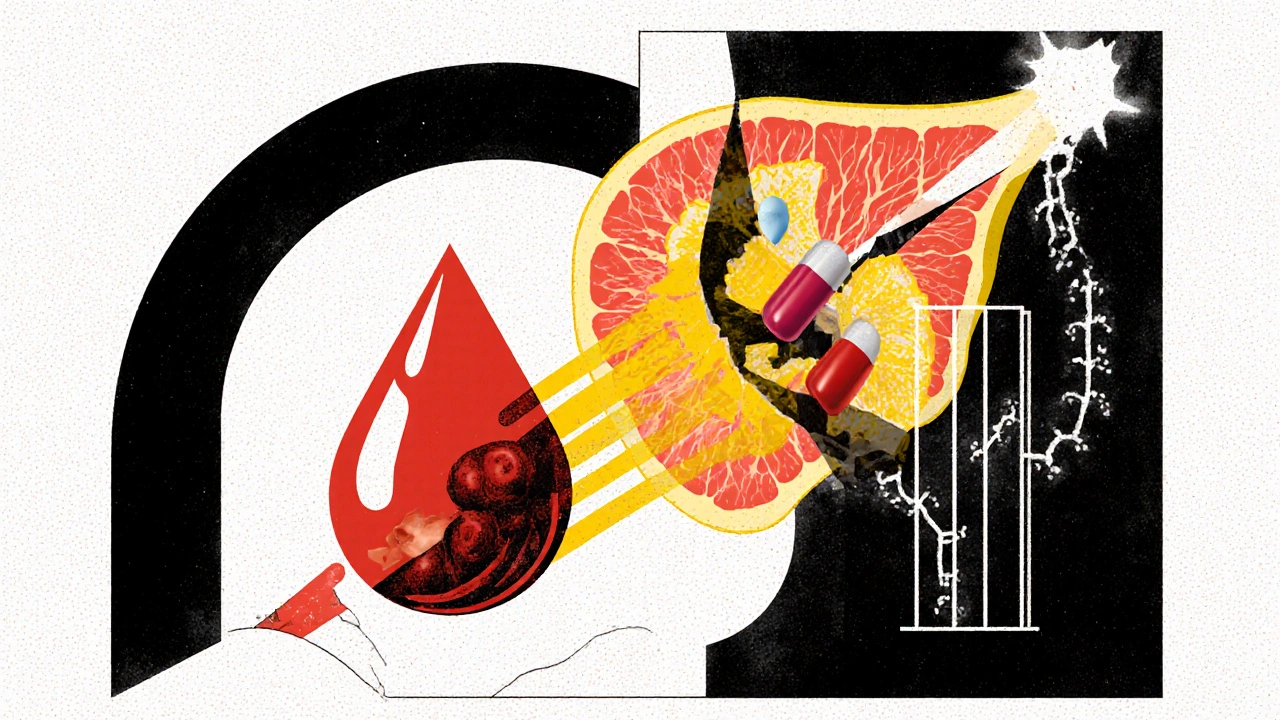
Genes Play a Role
Your DNA affects how you handle drugs. People are born with different versions of CYP enzymes. CYP2D6 is a great example. About 7% of Europeans are poor metabolizers-they break down drugs like codeine, tramadol, or antidepressants too slowly. Others are ultrarapid metabolizers-they turn codeine into morphine way too fast. That’s dangerous if they’re also taking a CYP3A4 inhibitor, because it traps even more morphine in their system. The result? Respiratory depression, coma, even death.
That’s why the Clinical Pharmacogenetics Implementation Consortium (CPIC) now recommends avoiding codeine entirely in ultrarapid metabolizers, especially if they’re on other drugs that interfere with metabolism. Genetic testing isn’t routine yet, but it’s becoming more common in heart disease, psychiatry, and cancer care.
Real-World Risks: What Goes Wrong
Some interactions are deadly. The most common ones reported to the FDA’s adverse event database involve:
- Warfarin (28.7% of reports)-often worsened by antibiotics, NSAIDs, or even cranberry juice
- Antidepressants (15.3%)-especially SSRIs combined with MAOIs or tramadol, risking serotonin syndrome
- Anticoagulants and antiplatelets-combined with NSAIDs, bleeding risk triples or quadruples
One of the most dangerous combos? ACE inhibitors (like lisinopril) with potassium-sparing diuretics (like amiloride). Both raise potassium. Together, they can push levels up by 1.0-1.5 mmol/L. Normal is 3.5-5.0. Above 6.0? Cardiac arrest risk spikes. And it’s silent-no symptoms until the heart stops.
The Beers Criteria, updated in 2019, lists 30 high-risk combinations for older adults. NSAIDs plus anticoagulants? Avoid. Benzodiazepines plus opioids? High risk of breathing problems. Even something as simple as combining multiple drugs that lower blood pressure can cause fainting, falls, and fractures.
How We Try to Prevent Them
Electronic health records now flag potential interactions. But here’s the problem: 80-90% of these alerts are false alarms. Doctors see so many warnings that they start ignoring them. That’s called alert fatigue-and it’s deadly.
Pharmacists are the frontline defense. A 2021 study showed pharmacist-led reviews reduced serious drug interactions by 37% in over 12,000 patients. They spot hidden risks: a patient on warfarin who started taking a new antibiotic, or someone on statins who’s now using a herbal sleep aid.
Tools like the Liverpool HIV-Drug Interactions Checker update daily and cover over 350 antiretroviral combos. It’s not perfect, but it’s a lifeline in complex cases. And now, AI is stepping in. A 2021 study trained a machine learning model on 89 million patient records and predicted drug interactions with 94.8% accuracy-far better than old rule-based systems.
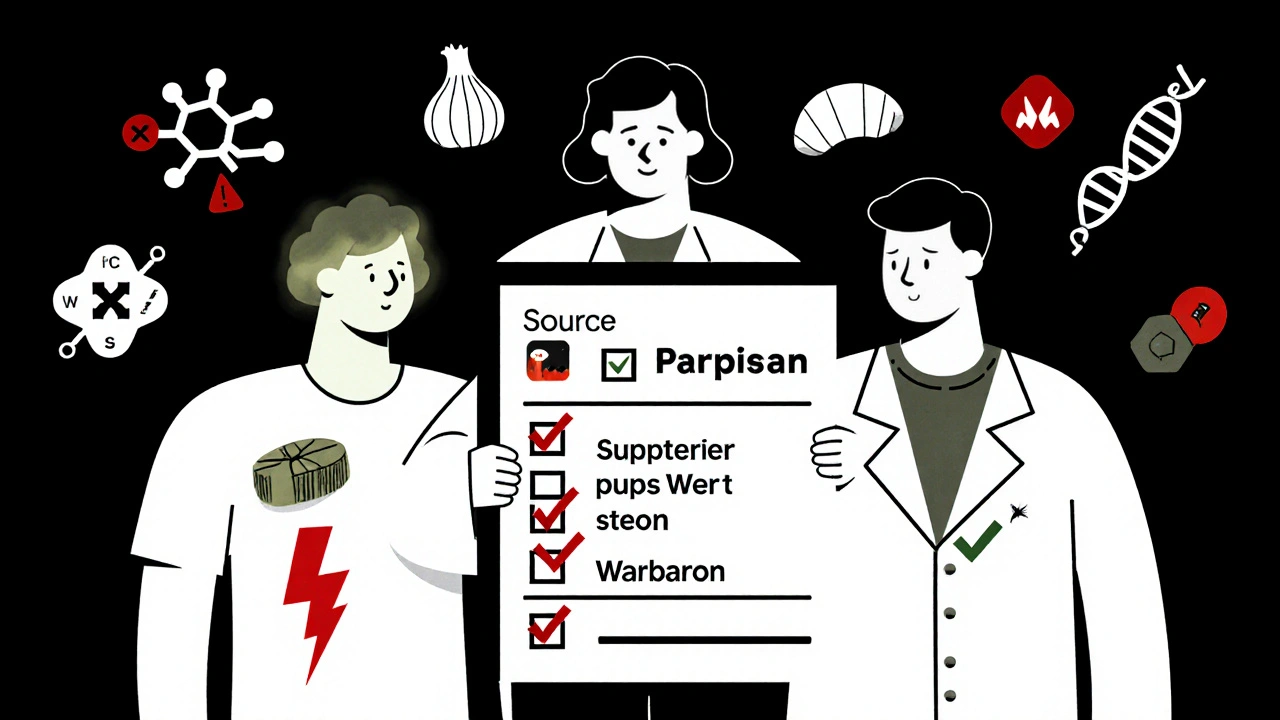
What You Can Do
Don’t assume your doctor knows everything you’re taking. That includes vitamins, supplements, OTC painkillers, and even herbal teas. Tell them everything. Even if you think it’s harmless.
Ask: “Could this interact with anything else I’m taking?” Especially if you’re on more than three medications. Polypharmacy is the biggest risk factor.
Check for changes in how you feel. Unusual dizziness, muscle pain, bleeding, confusion, or irregular heartbeat? Don’t brush it off. It could be an interaction.
Use one pharmacy for all your prescriptions. That way, the pharmacist can track everything you’re on. If you use multiple pharmacies, they won’t see the full picture.
And if you’re on warfarin, keep your vitamin K intake steady. Spinach, kale, broccoli-don’t suddenly eat more or less. It throws off your INR.
The Future Is Personal
Drug interactions aren’t going away. As we live longer and take more meds, they’ll only become more common. But the future is moving toward precision medicine. Genetic testing, AI-driven alerts, and real-time interaction databases will help tailor prescriptions to your body-not just your diagnosis.
Right now, the best tool you have is awareness. Know what you’re taking. Ask questions. Don’t be afraid to speak up. A simple conversation with your pharmacist could prevent a hospital stay-or save your life.
Can over-the-counter drugs cause dangerous interactions?
Yes. Common OTC drugs like ibuprofen, naproxen, and even antacids can interact with prescription medications. Ibuprofen can increase bleeding risk when taken with warfarin or aspirin. Antacids containing magnesium or aluminum can reduce absorption of antibiotics like ciprofloxacin or thyroid meds like levothyroxine. Even sleep aids like diphenhydramine can worsen confusion in older adults taking other sedatives.
Do herbal supplements interact with medications?
Absolutely. St. John’s Wort is one of the most dangerous-it reduces the effectiveness of birth control pills, antidepressants, HIV meds, and transplant drugs by inducing CYP3A4. Garlic supplements can thin the blood and increase bleeding risk with warfarin. Ginkgo biloba can raise the risk of bleeding when combined with NSAIDs or antiplatelets. Many people assume herbal means safe, but that’s not true.
Why do some drug interactions happen only in older adults?
Older adults often take multiple medications, have reduced liver and kidney function, and experience changes in body composition-less water, more fat. This changes how drugs are absorbed, distributed, and cleared. Their bodies can’t process drugs as efficiently, so even small interactions become dangerous. The Beers Criteria specifically targets these risks in people over 65.
Are drug interactions always obvious?
No. Many interactions are silent. You might not feel anything until it’s too late. A rise in potassium from ACE inhibitors and diuretics can cause no symptoms until the heart rhythm becomes unstable. A slow buildup of statin levels might only show up as muscle pain weeks later. That’s why regular blood tests and open communication with your provider matter.
Can alcohol cause drug interactions?
Yes. Alcohol can increase sedation when taken with opioids, benzodiazepines, or sleep aids. It can damage the liver, making it harder to metabolize drugs like acetaminophen-leading to liver failure. With metronidazole, alcohol causes severe nausea and vomiting. Even moderate drinking can interfere with blood thinners, diabetes meds, and antidepressants.
How accurate are drug interaction checkers in apps or online?
They’re helpful for awareness, but not foolproof. Most use rule-based systems that flag every possible combo, leading to false alarms. They often miss complex interactions involving three or more drugs, or those involving transporters and genetics. Always verify with a pharmacist or doctor-don’t rely solely on an app.
What should I do if I think I’m having a drug interaction?
Stop taking the new medication or supplement if it’s safe to do so, and contact your doctor or pharmacist immediately. Don’t wait for symptoms to get worse. Keep a list of all your medications-including doses and when you take them. Bring it to every appointment. If you have severe symptoms like chest pain, trouble breathing, or confusion, go to the emergency room.
Bottom Line
Drug interactions aren’t accidents-they’re predictable, preventable, and often overlooked. Whether you’re on one medication or ten, your body is a system where every drug has a role. Changing one can ripple through the whole system. The key isn’t avoiding meds-it’s knowing how they work together. Talk to your pharmacist. Ask questions. Keep track. Your life might depend on it.

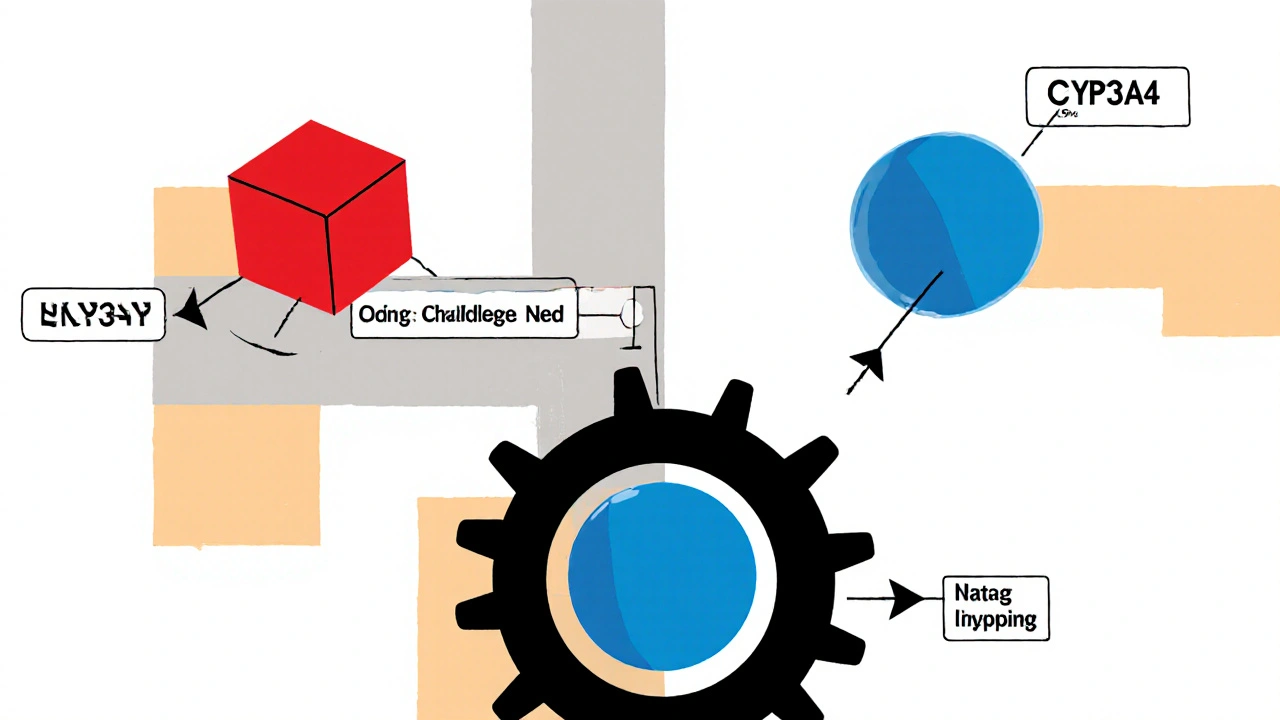
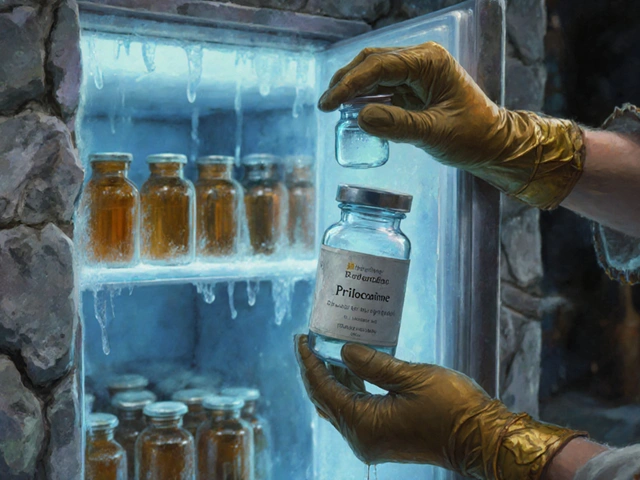

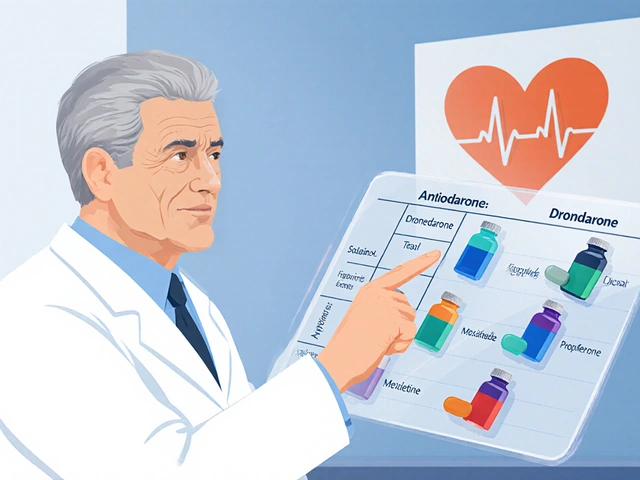
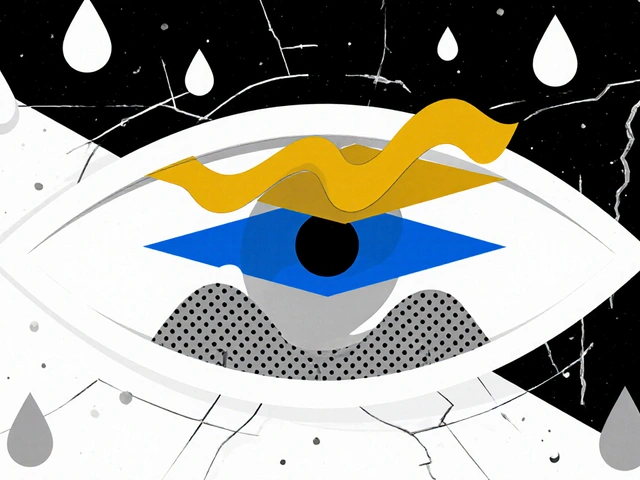

Debanjan Banerjee
November 21, 2025 AT 04:53Also, the bit about St. John’s Wort and cyclosporine? That’s a silent killer. Transplant patients don’t realize herbal =/= harmless. We need mandatory counseling on supplements when prescribing high-risk meds.
Steve Harris
November 22, 2025 AT 16:09Also, the alert fatigue point? 100%. I get 15 alerts per prescription. 14 are 'this drug might cause nausea if taken with aspirin.' We need smarter AI filtering, not more noise.
Michael Marrale
November 23, 2025 AT 06:23David vaughan
November 23, 2025 AT 14:13Cooper Long
November 25, 2025 AT 12:23Sheldon Bazinga
November 26, 2025 AT 05:23Sandi Moon
November 26, 2025 AT 13:28Kartik Singhal
November 27, 2025 AT 23:55Logan Romine
November 29, 2025 AT 06:58